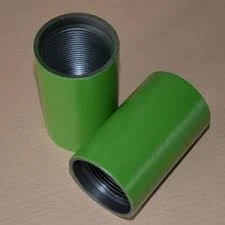- Afrikaans
- Albanian
- Amharic
- Arabic
- Armenian
- Azerbaijani
- Basque
- Belarusian
- Bengali
- Bosnian
- Bulgarian
- Catalan
- Cebuano
- Corsican
- Croatian
- Czech
- Danish
- Dutch
- English
- Esperanto
- Estonian
- Finnish
- French
- Frisian
- Galician
- Georgian
- German
- Greek
- Gujarati
- Haitian Creole
- hausa
- hawaiian
- Hebrew
- Hindi
- Miao
- Hungarian
- Icelandic
- igbo
- Indonesian
- irish
- Italian
- Japanese
- Javanese
- Kannada
- kazakh
- Khmer
- Rwandese
- Korean
- Kurdish
- Kyrgyz
- Lao
- Latin
- Latvian
- Lithuanian
- Luxembourgish
- Macedonian
- Malgashi
- Malay
- Malayalam
- Maltese
- Maori
- Marathi
- Mongolian
- Myanmar
- Nepali
- Norwegian
- Norwegian
- Occitan
- Pashto
- Persian
- Polish
- Portuguese
- Punjabi
- Romanian
- Russian
- Samoan
- Scottish Gaelic
- Serbian
- Sesotho
- Shona
- Sindhi
- Sinhala
- Slovak
- Slovenian
- Somali
- Spanish
- Sundanese
- Swahili
- Swedish
- Tagalog
- Tajik
- Tamil
- Tatar
- Telugu
- Thai
- Turkish
- Turkmen
- Ukrainian
- Urdu
- Uighur
- Uzbek
- Vietnamese
- Welsh
- Bantu
- Yiddish
- Yoruba
- Zulu
Understanding Bull Plug Oil and Gas Applications in Modern Energy Production Systems
Bull Plug A Critical Component in Oil and Gas Operations
In the oil and gas industry, where safety, efficiency, and reliability are paramount, every component plays a significant role in the overall success of operations. Among these, the bull plug serves as a crucial item, particularly during various phases of drilling, production, and maintenance. This article delves into the functionalities, materials, applications, and significance of bull plugs in the oil and gas sector.
What is a Bull Plug?
A bull plug is a specialized piece of equipment used to seal openings in piping systems, typically found in oil and gas operations. These plugs are designed to prevent the escape of liquids and gases, which is critical for maintaining safety and environmental integrity. The term bull plug can also refer to various types of plugs used to seal wells or piping components during different operational phases, including drilling, completion, and abandonment.
Functions of Bull Plugs
The primary function of a bull plug is to provide a tight seal that prevents fluid or gas from leaking out of a system. This is particularly important in high-pressure environments typical of oil and gas operations. Some key functions include
1. Leak Prevention A well-installed bull plug ensures that there are no leaks, which can lead to catastrophic outcomes, including explosions, environmental contamination, and loss of resources.
2. Pressure Regulation Bull plugs help in managing pressure within pipelines and wells, crucial for safe operations and equipment longevity.
3. Well Control During drilling and production, managing the influx or outflux of fluids is essential. Bull plugs can help maintain control over these dynamics, ensuring the safety of personnel and equipment.
4. Equipment Protection By sealing open ports or lines, bull plugs help protect valve interiors and other sensitive equipment from debris and moisture, enhancing the overall lifespan of the system.
Materials Used in Bull Plugs
bull plug oil and gas

Bull plugs are manufactured from various materials, depending on the specific needs and conditions of the operational environment. Common materials include
- Steel Due to its strength, steel is often used in high-pressure applications. Steel bull plugs can withstand significant mechanical stress and temperature variations.
- Plastic and Composite Materials In less demanding applications, plastic or composite materials offer a lightweight, corrosion-resistant option. These materials can be effective in environments where chemical exposure is a concern.
- Rubber and Elastomers Used as sealing inserts, these materials can provide additional sealing capabilities, especially in areas where vibration or thermal expansion might occur.
Applications in the Oil and Gas Industry
Bull plugs find application in various aspects of oil and gas operations, including
- Drilling During drilling operations, bull plugs are used to seal wellheads and prevent the influx of unwanted materials or fluids.
- Production In production scenarios, bull plugs secure pipelines, preventing leaks during extraction and transport of hydrocarbons.
- Maintenance and Repair During inspections or repairs, bull plugs seal off sections of tubing or piping, allowing maintenance to occur safely without risking pressure loss or leaks.
Conclusion
The bull plug may seem like a small component in the vast machinery of the oil and gas industry, but its importance cannot be understated. It serves not only as a preventive measure against leaks but also as a vital element for ensuring the safety and efficiency of operations. As the industry continues to evolve, so too will the technology and materials used in the manufacturing of bull plugs, resulting in even more reliable and effective solutions for one of the world's most challenging industrial sectors.
-
Tubing Pup Joints: Essential Components for Oil and Gas OperationsNewsJul.10,2025
-
Pup Joints: Essential Components for Reliable Drilling OperationsNewsJul.10,2025
-
Pipe Couplings: Connecting Your World EfficientlyNewsJul.10,2025
-
Mastering Oilfield Operations with Quality Tubing and CasingNewsJul.10,2025
-
High-Quality Casing Couplings for Every NeedNewsJul.10,2025
-
Boost Your Drilling Efficiency with Premium Crossover Tools & Seating NipplesNewsJul.10,2025







